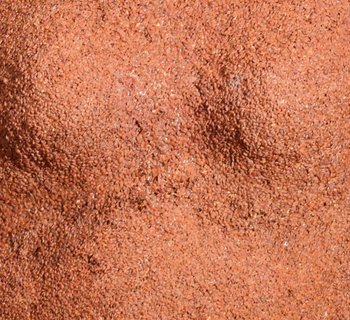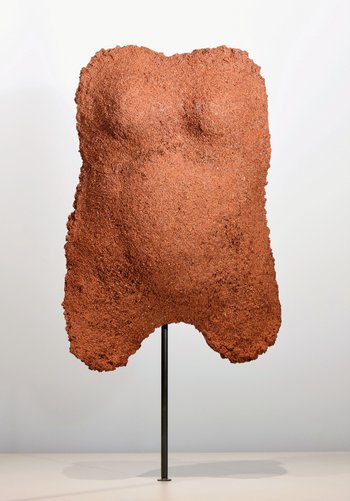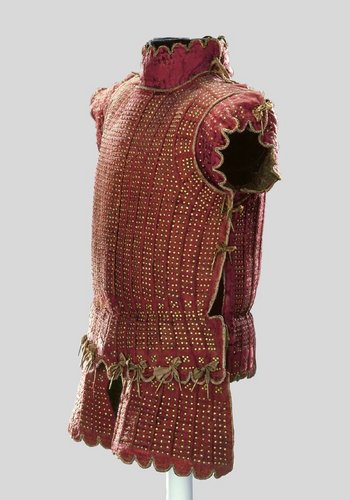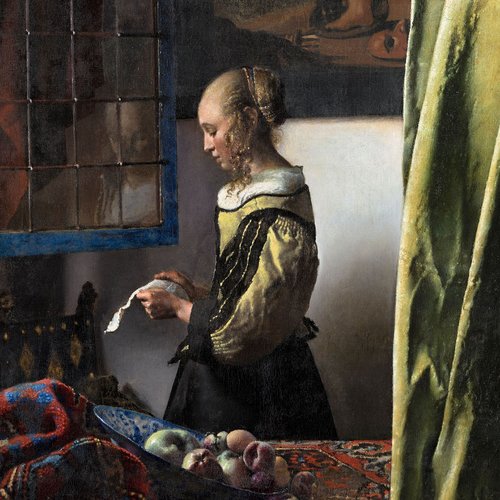[Translate to English:] Immer wieder
The gelatinous mass of seeds that later dried became a mask for the artist’s chest and abdomen. In her work, Murak continues to use organic materials such as soil, sourdough, cloth and seeds, linking herself through these materials with the processes of becoming and vanishing. Breaking in this way with the permanence that commonly appertains to the sculptures and torsi of Western art, she creates a representation of the human body that shares the body’s vulnerability and impermanence.



